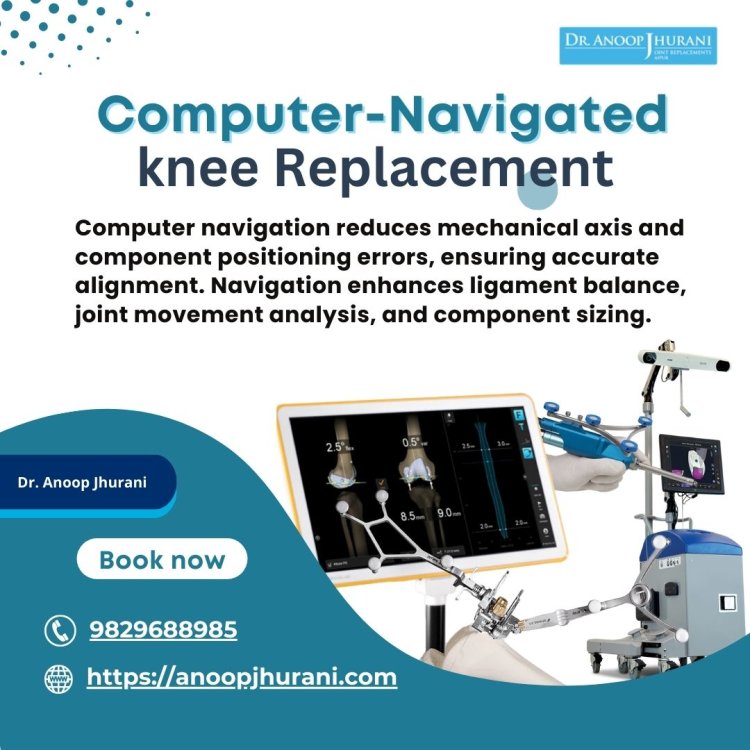Uses of Computer Navigation Systems
In Jaipur, Dr. Jhurani is an expert in computer-assisted knee replacement. Computer navigation helps the surgeon to get 100% accuracy.
Share this Post to earn Money ( Upto ₹100 per 1000 Views )

Computer navigation systems have a wide range of uses across various fields, with medical applications being just one of them. Dr. Anoop Jhurani and his team are your best option if you’re looking for a computer-assisted knee replacement surgeon in India, who has undergone advanced training in computer navigation surgery and uses this technique during surgery.
Computer navigation systems offer several benefits and use cases:
1. Improved Precision and Accuracy: Computer navigation systems enhance the accuracy of surgical procedures by providing real-time, three-dimensional visualization and guidance. This helps surgeons make more precise cuts and placements, reducing the risk of errors.
2. Component Alignment: Computer navigation assists in achieving optimal alignment of components, such as implants or prosthetics, during surgeries. Accurate alignment can lead to better functionality and longevity of the implanted components.
3. Deformity Correction: For cases involving deformities or anatomical abnormalities, navigation systems can help surgeons accurately assess the situation and plan corrective actions more effectively.
4. Ligament Balancing: Navigation systems aid in achieving proper ligament balance during joint replacement surgeries. This is crucial for restoring natural joint movement and stability.
5. Kinematics Analysis: Computer navigation allows surgeons to analyze joint kinematics in real-time, ensuring that the replaced joint mimics natural movement patterns as closely as possible.
6. Minimized Mechanical Axis Deviation: Navigation systems assist in reducing mechanical axis deviation, which is important for maintaining proper joint biomechanics and preventing early implant failure.
7. Repeatable Results: The precision and consistency provided by computer navigation systems contribute to more predictable outcomes, reducing the likelihood of post-operative complications.
8. Error Detection and Correction: Navigation systems can alert surgeons to potential errors during surgery, such as inaccurate cuts or misalignments. This proactive feedback helps prevent mistakes and improves the overall quality of the procedure.
9. Customization and Personalization: Some navigation systems allow for personalized surgical planning based on a patient's unique anatomy, improving the fit and functionality of implanted components.
10. Training and Skill Development: Navigation systems can be used for training surgeons, allowing them to practice procedures in a controlled virtual environment before performing them on actual patients.
11. Data Recording and Analysis: Computer navigation systems often record data during surgery, which can be analyzed post-operatively to evaluate the procedure's success, make improvements, and refine techniques.
Computer-navigation systems provide surgeons with advanced tools for achieving greater accuracy, precision, and consistency in complex procedures such as knee arthroplasty. By offering real-time guidance, error detection, and data analysis, these systems contribute to improved patient outcomes and better surgical techniques.








